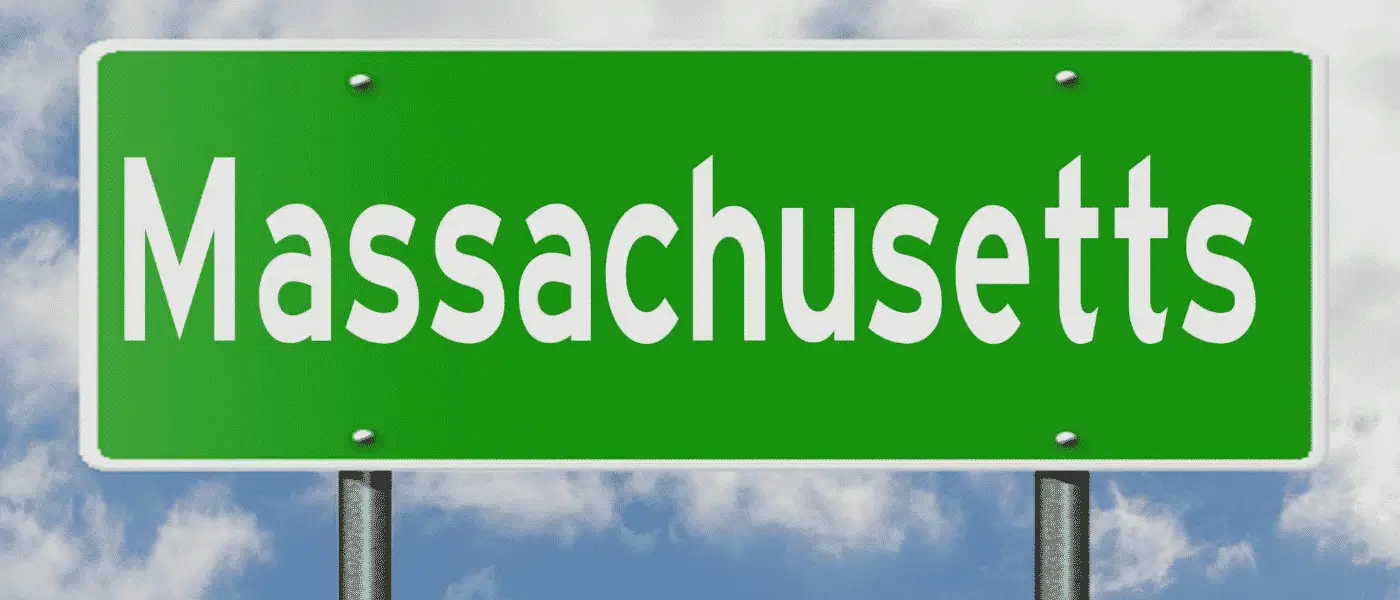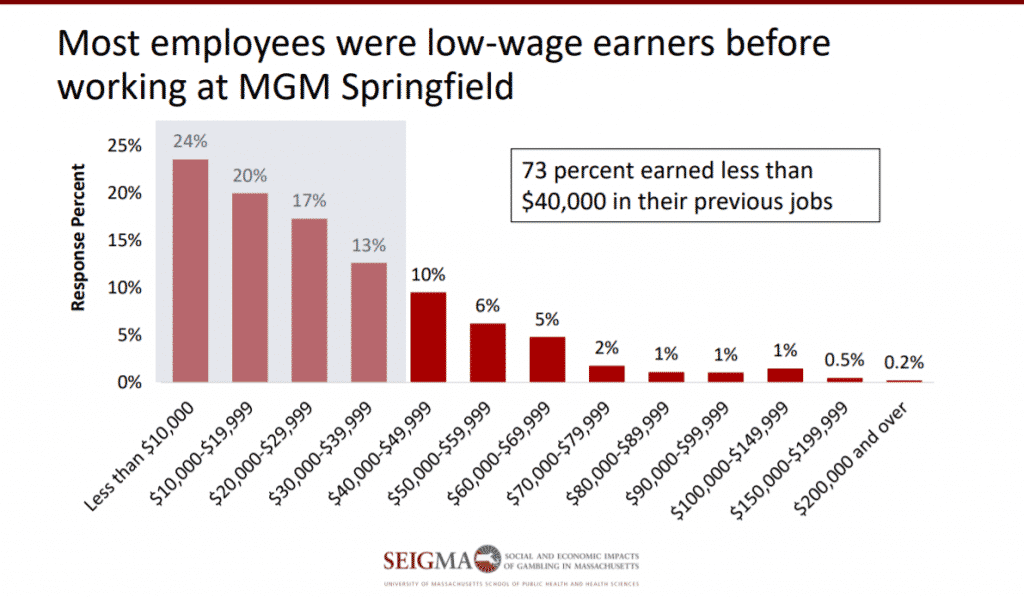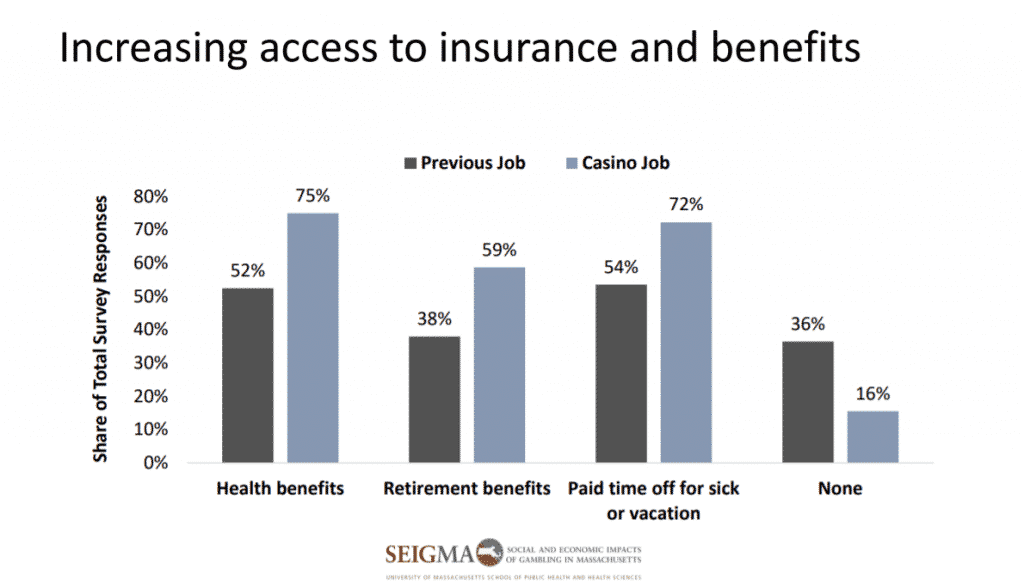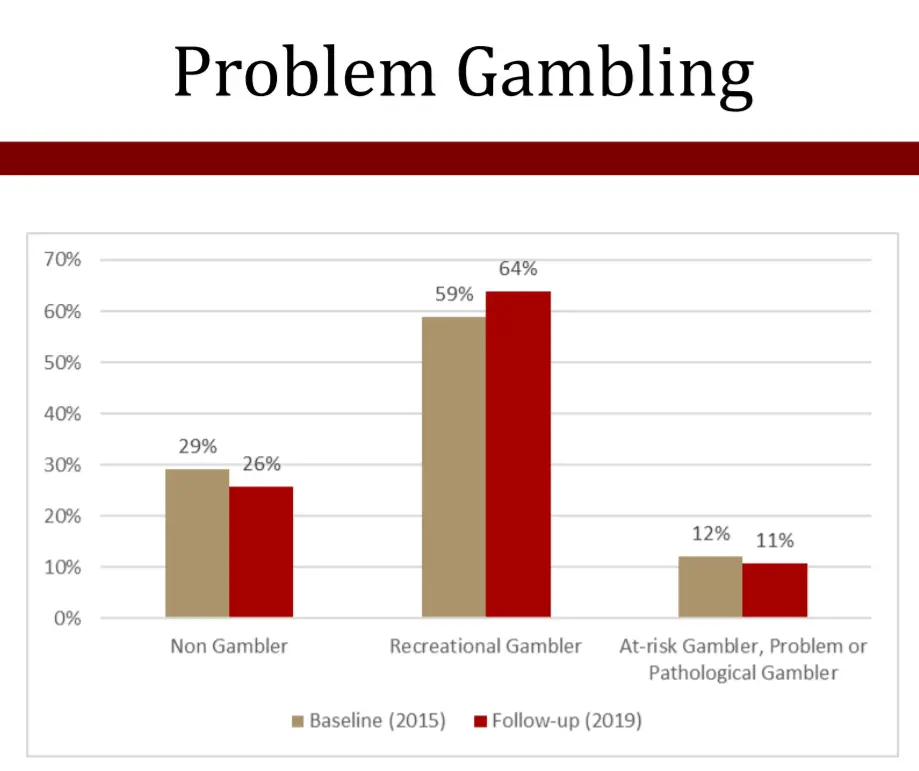Massachusetts Casino Report Examines Economic Impact

When Massachusetts legalized casinos in 2011, the law mandated an of casino gambling’s social and economic impacts.
The mammoth undertaking, dubbed the Social and Economic Impacts of Gambling in Massachusetts (SEIGMA), is being carried out by the University of Massachusetts School of Public Health and Health Sciences.
Since its inception, SEIGMA has provided Massachusetts and the gaming industry with cutting edge research and data that has enhanced the overall knowledge base and understanding of expanded gambling.
MGM Springfield, Two Years Later
The latest SEIGMA research looks at the impact of MGM Springfield after two-years of operation (the study ends pre-COVID-19, taking place from March 2018 – December 2019).
It was delivered in four parts, by four different presenters:
- New Employees at MGM Springfield – Andrew Hall, UMass Donahue Institute
- 2019 MGM Springfield Patron Survey – Laurie Salame, UMass Amherst Isenberg School of Management
- MGM Springfield First Year of Operations – Thomas Peake, UMass Donahue Institute
- Impact of MGM Springfield on Gambling Attitudes, Participation & Problem Gambling – Rachel Volberg, UMass Amherst School of Public Health and Health Sciences
In this column, I’ve pulled out a few of the more interesting nuggets from the report.
MGM Springfield Improves Job Prospects in the Area
It’s safe to say that the MGM Springfield casino has improved job prospects in the Springfield area.
Of the respondents to the casino worker survey, 10% were unemployed, 12% worked multiple jobs, and 25% were part-time employees before working at MGM Springfield.
According to the SEIGMA report, 73% of respondents earned less than $40,000 prior to their employment at MGM Springfield.

According to , “The average income of a Springfield resident is $18,435 a year. The US average is $28,555 a year. – The Median household income of a Springfield resident is $34,731.” The report doesn’t provide a breakdown of MGM Springfield’s.
Of the 2,418 respondents in the casino worker survey, 51% of respondents cited improved pay as a reason to seek employment at MGM Springfield. 37% of respondents cited improved benefits, which the chart below, provided in the SEIGMA report, makes plain.

Three Interesting Findings in the Patron Survey
Age of Guests
The majority of MGM Springfield patrons, 60%, were middle-aged (35-64). That’s not overly surprising. It is surprising that the casino attracted more younger patrons (age 21- 34) than older patrons (age 65 or older) by a 23% to 18% margin.
Income and Employment
The casino also attracted a mix of income brackets, with two-thirds of MGM Springfield patrons earning more than $50,000, and a full 35% earning over $100,000.
Per the report, the annual household incomes of MGM Springfield visitors were:
- 16% made less than $30,000
- 18% earned between $30,000 – $49,999
- 32% of visitors were in the $50,000 – $99,999 bracket
- 35% of MGM Springfield guests have a household income of 100,000 or more
71% of MGM Springfield visitors are employed, and retirees account for a further 18% of visitors. Unfortunately, that suggests that 11% of casino guests are unemployed.
Player Habits
19% of all patrons reported this was their first visit. 54% reported visiting the casino two to three times a month. A third of those surveyed visit once a week or more.
As is becoming the case in other gaming locales, not all guests are gamblers. According to SEIGMA, just 84% of respondents gambled during the visit they were surveyed.
72% of guests spent money on non-gambling activities. Those non-gambling activities included food and beverage, 61%, and entertainment (cinema, arcade, bowling, etc.), 14%.
One troubling data point is that low-income patrons account for an outsized percentage of casino gambling spend. The SEIGMA research states that low-income visitors are 19% of guests but account for 30% of casino gambling spend.
Problem Gambling
According to the SEIGMA research, the MGM Springfield casino’s addition has lessened the number of problem and at-risk gamblers.

That seems counterintuitive, particularly with overall gambling participation increasing from 70.9% in 2015 to 73.8% in 2019.
The report offers a few possible explanations, noting that their findings suggest “the Springfield population is far from naïve when it comes to casino gambling,” and that “surrounding states have had casinos for decades.”
“It appears to be an already exposed population as far as casino gambling is concerned,” according to , principal investigator of the SEIGMA study and research professor in the UMass Amherst School of Public Health and Health Sciences. “The Massachusetts population is far from naïve when it comes to casino gambling. States surrounding Massachusetts, including Rhode Island, Connecticut and New York, have had casino gambling for decades prior to the introduction of casino gambling in Massachusetts. Lengthy exposure means harmful effects may have abated over time, even in a population that has experienced recent local expansion.”
GameSense is Making a Difference
Another positive is that nearly 1-in-5 respondents (17%) took materials from a GameSense kiosk, and 8% spoke to a GameSense advisor. Of course, some of those conversations are concerning, as Amy Gabrila, a Senior GameSense Advisor at MGM Springfield, was quoted as saying in the report:
“I do talk to a lot of lower to middle income, often people of color, that aren’t necessarily having a gambling problem, but are gambling more than they were before… a lot of their reasoning is they are trying to better their situation in life. A story I heard, ‘I have tried everything in this life to move up, and gambling is my new American Dream. You talk to me about the odds on the slots… but it is just as good as me trying to pull myself up where I am in my situation and do anything legit. The odds aren’t that different.’ I have heard that story more than once.”







